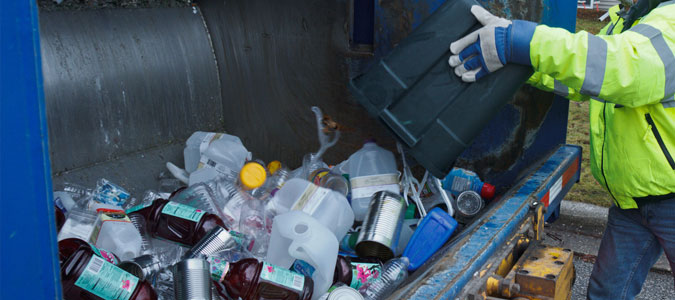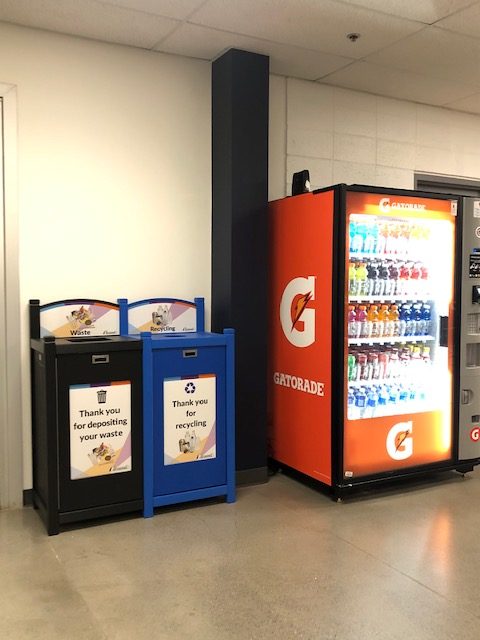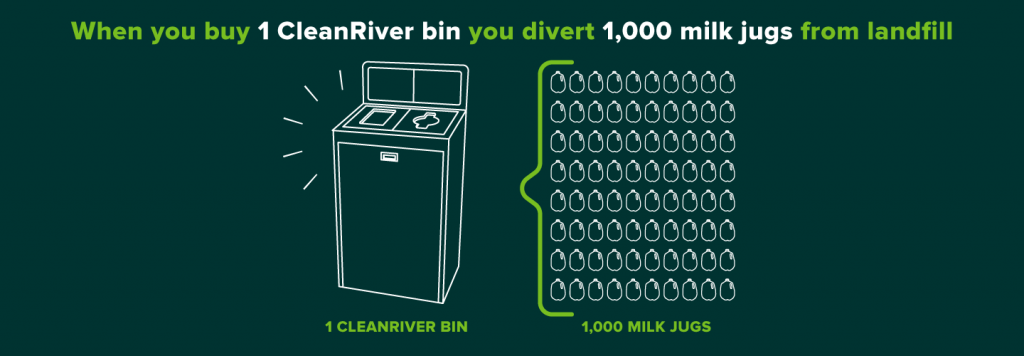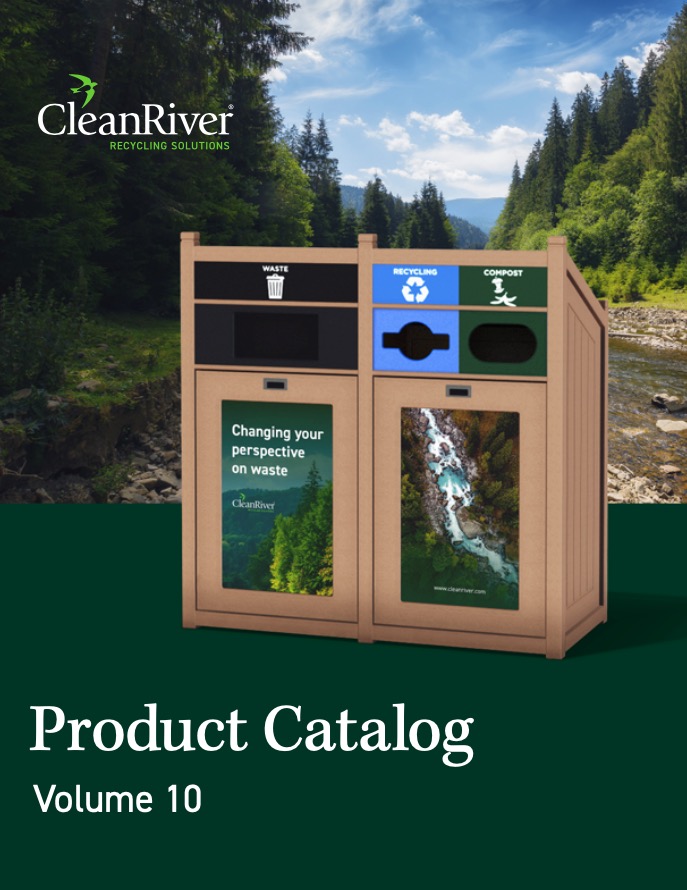Share
How long does a recycling program take to implement? The answer depends on a few factors:
- Are you implementing a recycling program
- Are you replacing a recycling program
If you’re implementing a recycling program, it can take anywhere from 1-3 months of collaboration to get started. If you’re replacing a recycling program, it should take less time because certain elements are already established. A good guess at how long it would take to replace a recycling program with a new one is 2 weeks – 2 months worth of time.
With that being said, there are many different types of recycling programs to choose from. Click here to read our ultimate recycling programs guide! After you’ve determined your workplace or event needs a commercial recycling program, here are the next steps you need to take:
Step 1: Get a Recycling Coordinator
Logistics for waste management and commercial recycling require a recycling coordinator to oversee the entire operation. This individual is responsible for designing the collection program, selecting a hauler or arranging in-house transportation of materials, facilitating education and outreach, and tracking progress. CleanRiver Recycling Solutions has been providing these services for our clients for over 30+ years. This is the most crucial step in ensuring your desired recycling program runs efficiently.
Step 2: Do a Commercial Recycling Waste Audit
Determining how much recyclable waste is getting tossed into the wrong commercial recycling containers and garbage bins is crucial for optimizing your recycling program needs. For example, many concert venues will generate predominantly recyclable beverage container waste like aluminum cans or glass bottles. Some transportation venues will generate mainly paper waste from newspapers and tickets. Many retail establishments and warehouses will also generate a large amount of cardboard from concessionaires’ packaging.
Use people from across the organization. It’s always advisable to include a representative from your Finance and Health and Safety teams if possible. Waste audits can be an eye-opening experience as they often identify wasteful practices that translate into soft dollar losses from the financial perspective. They can also highlight areas of hazard that Health & Safety needs to be aware of.
Waste should be collected on Tuesday, Wednesday, and Thursday. Don’t include Mondays and Fridays as there is typically a higher incidence of absences on those days
Since recyclables are marketed by weight, you’ll need to estimate this for each material you plan to recycle. But before attempting to weigh a dumpster full of newspapers on a scale, use this shortcut. Calculate the volume for each major component of your recyclables as well as its percentage of total recyclables. Using this data, the volume-to-weight conversion chart (PDF) will help you best estimate the amount of each material your venue will generate.
Weigh each bag and record the weight, location, and stream. Do a visual assessment of the contents and determine the percentage of contamination. It’s helpful to note down the actual items causing contamination so you can communicate them to everyone afterward.
A diversion rate is an easy way to measure how your organization’s recycling program is doing. Here’s the simple formula:
The weight of recycling includes any organic waste that’s collected for compost and any recyclable waste that’s diverted from landfill.
Step 3: Practice Waste Prevention
Waste prevention means using less material to get a job done—and ending up with less waste to manage. In addition to environmental benefits, waste prevention saves money. Take a good look at your recycling collection data to see ways to reduce waste first. The most common forms of waste prevention are reducing, reusing, and donating.
Reduce
Modify current purchasing practices to reduce the amount of waste generated. For example:
- Set printers and photocopiers to default duplexing and make training manuals and personnel information available electronically to reduce the amount of office paper used.
- Purchase products that use less or no packaging materials.
- Purchase products made with recycled-content materials.
- Purchase products in bulk.
- Switch to reusable transport containers.
Reuse
Reusing products and packaging prolongs their useful lives, delaying final disposal or recycling. Reuse is the repair, refurbishing, washing, or recovery of worn or used products, appliances, furniture, and building materials. You can, for example:
- Reuse corrugated moving boxes internally.
- Reuse office furniture and supplies, such as interoffice envelopes and file folders.
- Use durable rather than disposable towels, tablecloths, napkins, dishes, cups, and glasses.
- Use incoming packaging materials for outgoing shipments.
Donate
Prevent waste by donating products or materials to charities or nonprofits. For example:
- Donate unwanted supplies to local schools or nonprofit organizations.
- Donate food scraps for use as animal feed.
- Donate uneaten food to local food banks.
- Advertise surplus and reusable items through a commercial materials exchange.
- Donate excess building materials to local low-income housing developers.
Step 4: Include Concessionaires, Staff, and Volunteers
You’ve researched the options and have developed your recycling program. Who at the venue knows about the program? Support from concessionaires, venue staff, and volunteers is essential when it comes to achieving a positive outcome. These groups are the program’s support system—they must be onboard and willing to work to make the program successful.
Step 5: Select a Contractor/Waste Hauler
The first step in transporting recyclables from your program site to a recycler is to decide if you will contract out or haul recyclables using in-house staff.
If your venue chooses to contract with a hauler rather than haul recyclables directly, ask your current trash hauler if it also offers recycling pickup. Economically, this may be your best option. If your trash hauler does not provide recycling services, contact local recycling companies—they should be listed in your phone book.

Your venue also can consider using a resource management (RM) contract with haulers. Unlike traditional solid waste service contracts, RM compensates waste contractors based on achieving your organization’s waste reduction goals rather than on the volume of waste disposed of. As a result, RM aligns contractor incentives with your recycling goals and encourages innovative approaches that foster cost-effective resource efficiency through waste prevention and recycling.
A few venues, typically smaller-scale or one-time special events, haul their own waste. In this case, train staff to collect and transport recyclables, too. Contact your local recycling center for more information and to find local drop-off sites.
Because some contractors only accept single-stream or multi-stream recycling collections, you need to select a collection method before choosing a contractor.
- Single stream collection uses one bin to collect all of the various types of recyclables.
- Multi-stream collection separates the various recyclables into different bins. This often is called source separating. Some materials, such as food waste and plastics, cannot be collected together. Plastics, aluminum, and glass, on the other hand, are frequently collected together.
Some questions to ask when picking a service provider:
- What materials do you collect?
- Do you provide single stream (all together) or multi-stream (separate) collection?
- Do you charge for collection?
- Do you pay for recyclables? How do you calculate their value?
- Do you offer a package deal that includes both waste and recyclables pickup?
- Will there be a lower price for refuse pickup if I use your recycling services?
- Do you provide collection containers?
- What is the pickup schedule? Do you pick up on call?
- Is there a minimum or maximum weight that you will pick up?
- What is the allowable amount of contamination?
- What are your reporting and accounting procedures?
- Could you provide client references?
- How long have you been in business?
Step 6: Set Up the Collection Program
One of the things you can guarantee is that change is going to happen, and in the world of waste management and recycling we have seen many changes over the years. One of the major issues that I’ve seen is people take the time to implement all the proper recycling equipment, only to see change be forced on them. For example, they were collecting two or three different waste streams but now, due to a new waste hauler contract or government mandate, their collection streams must change. If your waste and recycling stations are not designed to be future-ready and transition easily to different waste streams then this can end up costing you a lot of time and money.

Step 7: Facilitate Outreach and Education
Education is the best way to encourage the public and concessionaires to recycle. Use signs, displays, loudspeaker announcements, and/or text to teach them:
- WHY they should recycle.
- WHAT they should recycle.
- WHERE they can recycle.
- HOW they can recycle.
Include signage and/or literature at the site showing how much has been recycled already or goals that you are trying to reach. This will stimulate participation.
Likewise, use signs to clearly indicate recycling bin locations and instructions.
Step 8: Monitor and Evaluate the Recycling Program
After all, is said and done, and you’ve put the work in. You should be well on your way to enjoying the cost savings that come with a successful recycling program.

______________________________________________________________
- Looking for more sanitation tips and tricks? Check out these other blogs:
CleanRiver Recycling provides a variety of innovative, flexible, and customizable recycling solutions. Start saving money today with our green recycling programs.
If you have additional questions that weren’t answered in this blog post please call us at 1-866-479-4038 or email solutions@cleanriver.com



